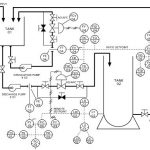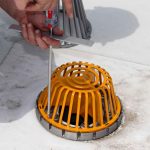A hazop study is a powerful, systematic, and structured methodology that helps in identifying potential hazards and/or problems with plant operability. Hazop stands for hazard and operability study. The hazop uncovers consequences arising from various causes and provides recommendations for safety improvements in design and operations. It has a comprehensive procedure that the study team follows throughout the study.
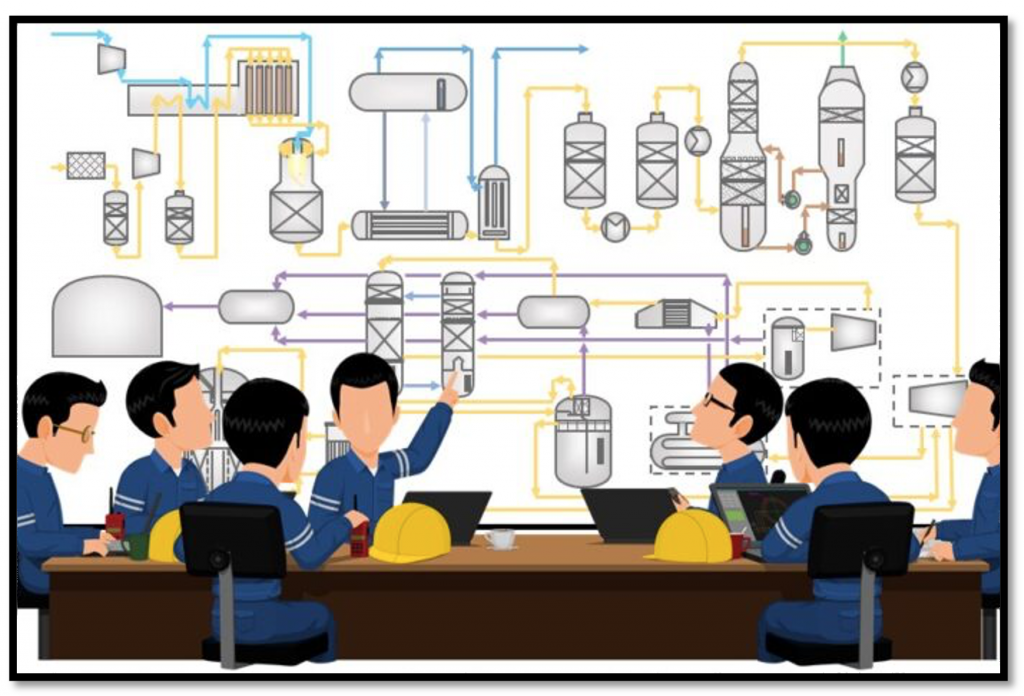
This technique was developed originally for chemical plants, but now it is being used for many other facilities, such as water treatment plants, sewage systems, chemical, fuel storage and transfer systems, and other process plants. In this article, you will learn how to prepare for a hazop, proper hazop execution, and how to ensure recommendations are implemented appropriately.
Preparing for a Hazop
Preparing for a hazop involves selecting the appropriate team members, choosing a team leader, gathering the applicable documents, and finally choosing an appropriate time to exeucte the hazop.
The Hazop Team
The team for the hazop study is selected very carefully. This is an interdisciplinary team of professionals who are experts in the areas of design, operations, maintenance, and safety who can identify potential hazards in the design of a process that may have been overlooked by the design team. The expert team does collective brainstorming during the hazop sessions which stimulate creativity and new ideas, which help in a thorough review of the process.
The Team Leader
The hazop team leader is the key person. He/she is technically very competent and provides vast experience. The hazop team leader facilitates discussions for each node using guidewords to identify parameters, ensuring the sufficiency and accuracy of the analysis. He/she also maintains the progress and keeps to the schedule and agenda. The team leader should be an independent expert without any direct responsibility of the plant for its design or operations. That is why often the team leader of the hazop study is an outsider with no linkage with the process organization.
Documents Required for the Study
The team members use the following documents during the hazop study:
- Piping and instrumentation diagrams (P&IDs)
- Process descriptions with interlocks descriptions
- Process flow diagrams, along with heat and material balances
- Heat and Mass balances
- Cause and Effect Diagrams
- Process Design Basis
- Process Operation & Control Philosophy
- Operations and Maintenance Manual
- General arrangement drawings
- Material safety data sheets for hazardous chemicals
- Equipment and instrument datasheets
- Project control philosophy
- Startup and emergency shutdown procedures
Timing of Hazop Study
Hazop study usually begins only after all the final documents including the P&IDs from the design team become available. Before undertaking hazop of a new plant it is imperative that all the design issues reviewed and implemented by the design team are also fully reflected in the P&IDs and other documents. All the P&IDs must be up to date to carry out a hazop study for an existing or new-build facility.
Hazop Execution
Identification of Nodes
The hazop study team identifies the nodes using the P&ID then applies the appropriate guidewords with various failure modes to discover the corresponding deviations.
A node is a section where one or more process conditions undergo a significant change. For example, a pump may be a node because the fluid pressure increases in a pump. A furnace is a node because the chemical and physical composition of material changes here, and a heat exchanger is a node because there is a change of temperature of the fluid in there.
Another node might cover the transfer of material from one vessel to another through a valve. In this case, the process change is the flow change in the pipe across the valve.
The hazop study team identifies all the nodes and marks them on the P&IDs, with different colors for easy identification.
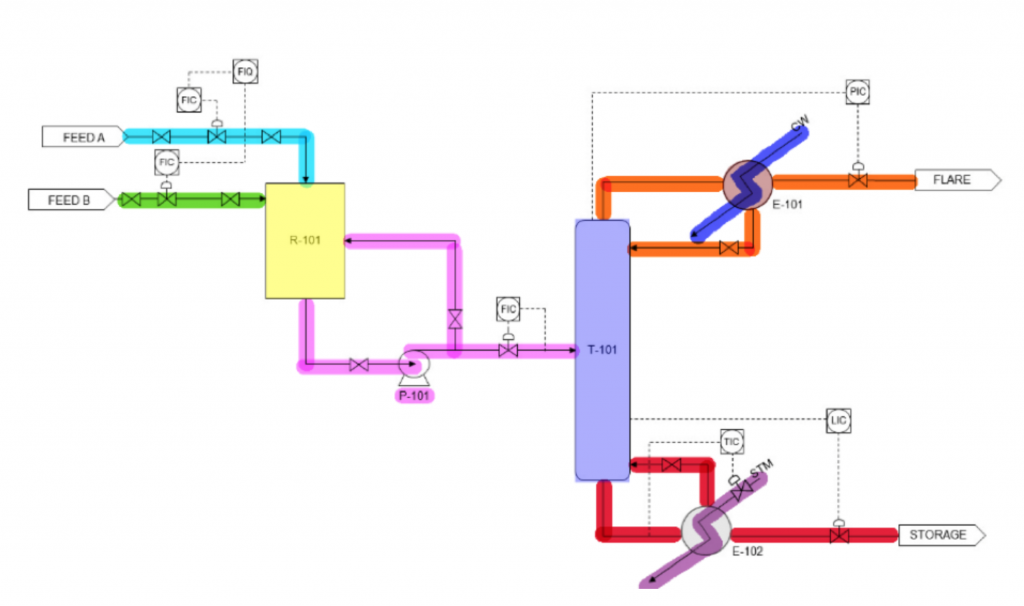
Evaluation Sequence
The team selects a process parameter; say pressure, for a node. Then combines a series of guidewords with the parameter ‘pressure’ to see if a deviation exists for that node.
For example, combining the guideword ‘low’ with the parameter ‘pressure’ to define the deviation ‘low flow’. The team then focuses on listing all the credible causes of a ‘low flow’ deviation beginning with the cause that can result in the worst possible consequence the team can think of. A team member notes all the causes, lists the outcomes, their consequences, safeguards, and any possible recommendations to mitigate them. The team repeats the process for all possible deviations for that node. The team then looks at the next node and repeats the process for all the notes.
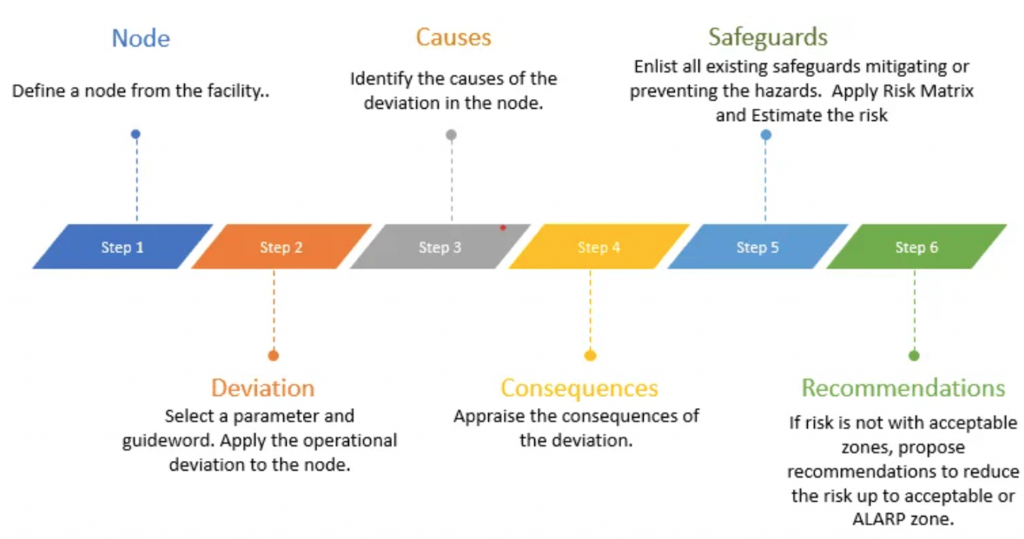
Using the guide words and applying them to the process parameters generates the deviation for each node. The study uses the standard guidewords. As an example: for a heat exchanger outlet line ‘Low’ + ‘Flow’ :
Low + Flow == > ‘Low Flow’ =>> Deviation
Such observations are key points discovered in the hazop study and documented as deviations. By a correct understanding of guidewords and process parameters generate multiple deviations.
The following table provides a few guidewords and their meanings:
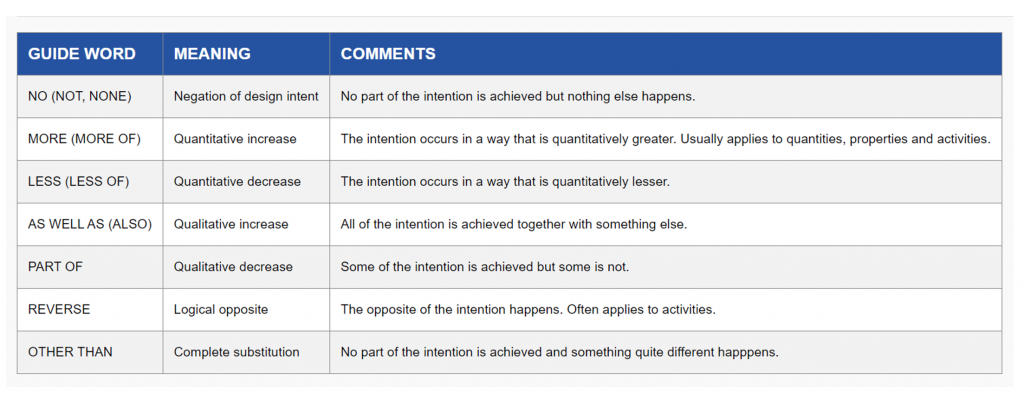
During the study, some guidewords are easy to use and their application is easily understood by the study members and the deviations that they generate are quite clear. However, there are some complex combinations of some guidewords and parameters that are not very obvious and may not generate a plausible deviation. For example: while ‘No Flow’ is a clear deviation, ‘As Well As Flow’ is not obvious to an observer.
Design Review Considerations
Performing preliminary hazops on P&IDs for normal design reviews takes a long time. Since the hazop study team is seeing these diagrams for the first time, they have to understand the design intent to find the deviations. Many times a hazop study generates a large number of recommendations that could have been covered during the normal design reviews.
The hazop study should be only be undertaken after the design team completes the final design review and all the corresponding documents and drawings are final. One should never try to use the hazop study for the design review at it compromises the very concept of hazop, in which a separation of the designers from the hazop team is an important concept.
Examining Design Intent
The design intent in any process is the process behaviors, as designed by the process engineers. The process parameters such as temperature, pressure, or flow give the different aspects of design intent for each node. Generally, each node has multiple parameters associated with it.
The hazop method puts great importance on deviations from design intent because it reveals potential hazardous issues. For example, low flow in a fire hydrant line may result in a potential hazard in operational conditions. The hazop study must identify and consider all aspects of design intent for which deviations may result in various normal and abnormal scenarios.
Recommendations
Hazops identify hazards, although many of the study recommendations concern operability issues. The main focus of the study is to identify hazards but team members must note operability issues. Operability issues may lead to process hazards without proper mitigation measurements in place.
If for any hazard condition the safeguards in place are not sufficient to provide protection then the study recommends improving the process. A team member assigns action items to the relevant department to resolve the issues. Finally, the management reviews all recommendations made in the study to determine relative priorities and determine a schedule of implementation.

